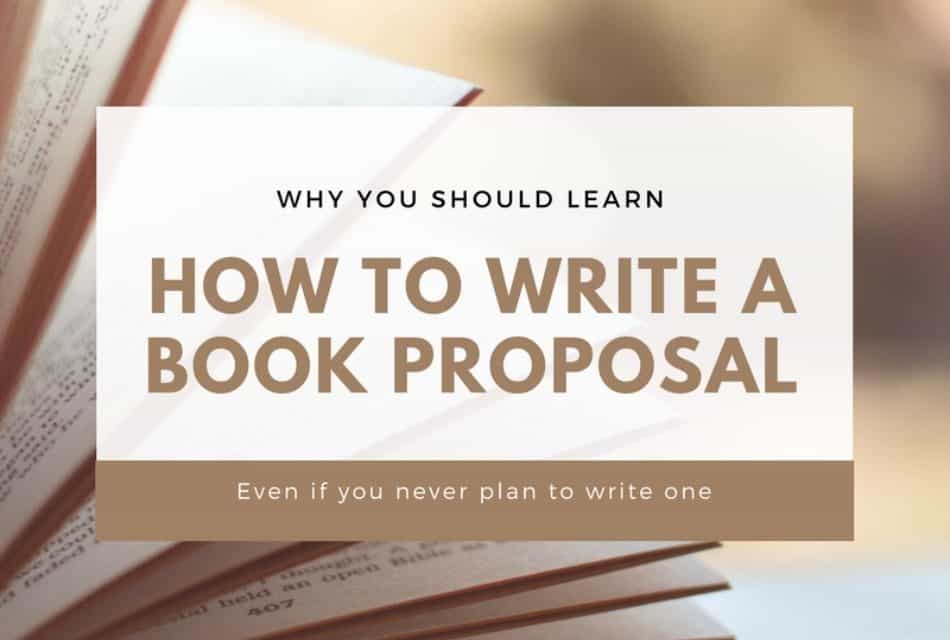Sooner or later, you may face the challenge of how to write a book proposal. If you’re writing nonfiction, it’s obligatory—book proposals are the documents used to sell nonfiction, whether you’ve finished the book or not. (This includes memoir; at a recent conference, I shared the stage with dozens of other agents, and more than half of us raised our hands when asked if we used book proposals to sell memoir.) For help with your nonfiction book proposal, start here.
If you write fiction, you may be asked to write a book proposal—for a short story anthology, a writing book, even a series.
Even if you never plan to write a book proposal, you should be familiar with what’s here, as it reveals the sort of data publishers analyze when deciding whether or not to publish a book.
Description of the work
This is the pitch for the book, the jacket copy if you will. You’ll need a couple of paragraphs, around 200 to 300 words. The first paragraph should communicate what the book is about, why it’s different, and the promise it makes to readers. Succeeding paragraphs should expound on the first: organizing principle, tips and techniques, your writing credentials and credits, etc.
Selling points
Here you identify the reasons your project will succeed in the marketplace, starting with the Unique Selling Proposition (USP). The USP is what differentiates your project from the competition, the reason readers will buy your book rather than similar titles.
You should also list additional factors related to the sales potential of your project, which may include:
- USP
- Relevant trends in publishing
- Relevant trends related to the topic
- Your platform
- Your sales history
- Your reach
- Big-name endorsements
- Big-name foreword
Audience
This is where you identify who will buy your book:
- Fans of insert bestselling comparable titles here
- Members of organizations likely to support the book
- People related to your platform, from Facebook followers to students, clients, colleagues, etc.
- Statistics related to your subject matter, e.g., number of people doing yoga who’ll love your yoga book
- Statistics that support the appeal of your project, e.g., the number of people doing yoga in the U.S. has increased from 17.76 million in 2008 to 26.27 million in 2016
- Any other information/statistics/surveys that speak to the audience of your project
Comparable titles
This is where you list six to ten successful books similar to yours, preferably published in the past three to five years, as follows:
Title: Subtitle
Author
Publisher, Date of Publication
Format, Page Count, Trim Size, Price Point
ISBN-10
Here you say in 50 to 100 words how this title is similar to yours, and how your project is better/different.
You should also list your previous titles here, along with sales history.
Chapter-by-chapter outline
Here you break your project down chapter by chapter:
- Title
- 50-100 words describing what this chapter covers
- Bullets identifying the sections of the chapter, with heads and subheads
- Running elements that will appear throughout the chapter/book, i.e., exercises, sidebars, interviews, case histories, etc.
- Illustrations/photographs/charts that will appear throughout the chapter/book
About the author
- Bio
- Books you’ve already published
- Links to your website, blogs, articles, YouTube videos, etc.
- Your speaking schedule for the past six months and next six months
- Social media stats: Facebook friends/likes, twitter followers, Instagram followers, etc.
- Any other relevant marketing and PR information that shows how you can sell this book
Sample chapters
You need to provide the first chapter of the book, along with at least one more sample chapter. If it’s a memoir, you’ll need to provide the first 50–100 pages.
For your own edification
No matter what you’re writing, ask yourself how you would approach each of the aforementioned elements if you were called upon to write a book proposal for your project. Do the research. The answers may surprise you.
This post was originally published at Career Authors.

